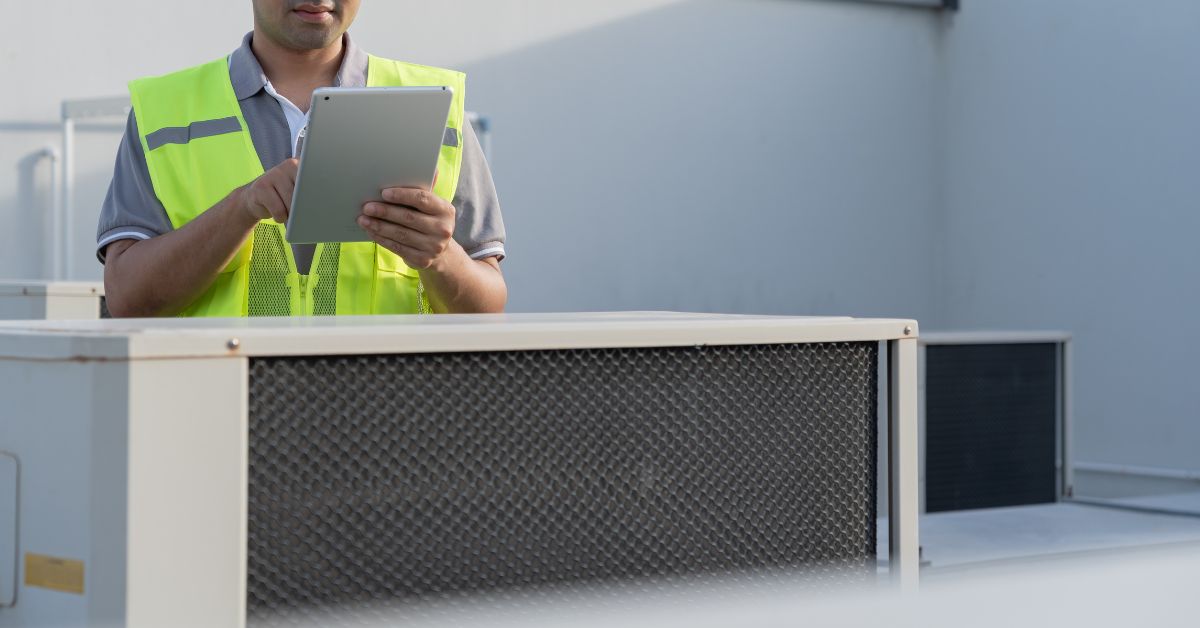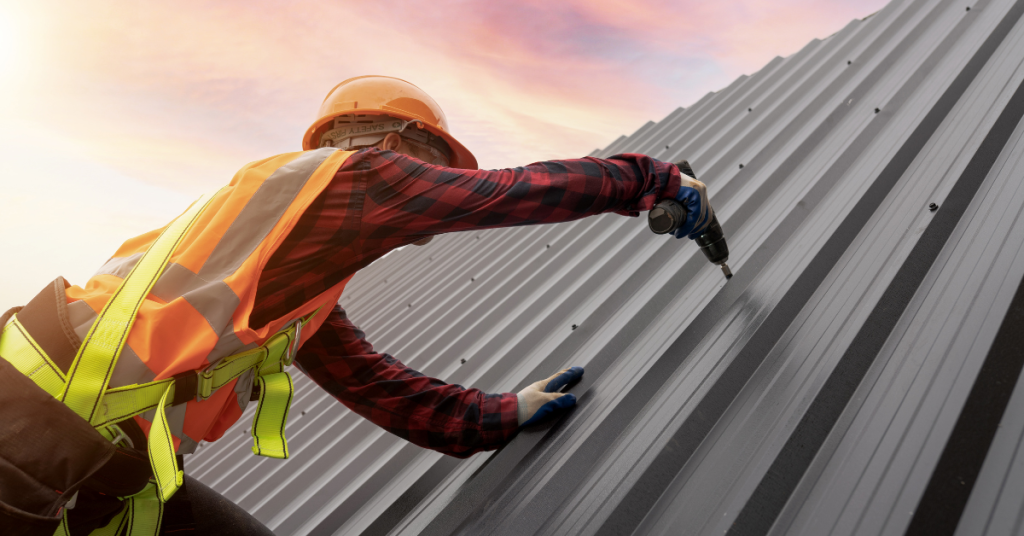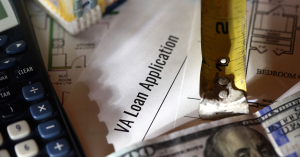In a journey marked by house hunting, bidding, contract negotiation, and, finally, the joy of saying, “I bought a house,” the last thing a homebuyer wants is to hit a snag at the VA appraisal stage, primarily due to a factor as commonly overlooked as the roof.
My deep understanding of this topic shows that this scenario happens more often than you think. The stringent requirements by the Department of Veterans Affairs can quickly turn a dream home into a red-flagged property. And it’s not by accident; roofing issues add to homeowners’ list of structural problems.
Understanding VA Roof Requirements
The VA home loan or VA mortgage initiative, a United States government-backed program, was designed to assist borrowers in accessing loans to own homes. Unlike conventional loans, these loans do not require a down payment, offering competitive interest rates and even bypassing the necessity for private mortgage insurance (PMI).
A VA loan can also finance something unique, like a VA loan for a barndominium. These homes are barn conversions or custom-built to the owner’s specifications, making the loan a flexible financial instrument.
VA loans even provide options for those looking to build a brand new home from scratch through what is known as a VA one-time close construction loan. However, the loan’s leniency is not indicative of a lax property assessment process.
The VA established the VA loan minimum property requirement to protect potential homeowners from undesirable property conditions. These requirements encompass various aspects of the property, including the condition of the electric, heating, and cooling systems.
In addition, the structure must be in good condition, built to last, and provide adequate protection from pests and the elements to satisfy the VA loan requirements.
Importance of Roof Inspection in the VA Loan Process

When applying for a VA-backed loan, roof assessments are essential. That’s because it helps in identifying any potential defects with the roof. Unexpected repair costs add financial pressure to both seller and buyer and can be a real deal-breaker in selling.
The roof needs to effectively keep out moisture and meet the MPRs to ensure future usability. If the VA loan appraiser identifies a faulty roof, the home must be repaired before eligibility for VA financing.
A professional appraiser may investigate its condition comprehensively, ensuring it can withstand the elements and has no lead-based paint to avoid future challenges.
The VA Minimum Property Requirements (MPRs)
The VA MPRs provide a set of standardized rules that must be fulfilled to approve a loan. The MPRs for roofing are defined to ensure that the structure is reliable and has a reasonable lifespan that doesn’t need an immediate replacement or signify damage. Here are some necessary conditions that roofs must meet:
- The roof should be free from leaks, providing an adequate barrier to prevent moisture or precipitation from entering the home.
- It must have a reasonable future utility, meaning it should have a minimum expected lifespan of over two years after assessment.
- The structure should be sound, without major defects such as significant warping, poorly installed patches, or large amounts of missing shingles.
- The requirements include the soundness of any ancillary structures, such as a detached garage or storage shed.
Identifying these requirements ensures veterans and their families purchase a structure that adheres to local building codes. This is part and parcel of the VA home inspection checklist to verify the home’s safety, sanitary conditions, and structural integrity.
VA Roof Requirements: Inspection Checklist

The VA Roof Requirements inspection checklist provides a methodical and detailed evaluation of key aspects. Here’s an overview of the elements covered in this comprehensive assessment:
Inspecting the Roof’s Longevity
The first element in the checklist pertains to the roof’s structural stability and expected lifespan. The inspector evaluates whether it will last at least two years.
Assessing Material and Installation
The VA roof evaluation checklist also examines the material and installation of the roof. Regardless of the type (shingles, tiles, or metal), the structure must be installed appropriately, structurally sound, and free of any evident defects or damages.
Leak and Water Damage Inspection
An integral part of this comprehensive checklist is the leakage or water damage inspection. Any signs of water intrusion, past or present, require immediate attention.
Verifying Ventilation
Adequate ventilation is crucial not just for longevity but also for maintaining a balanced attic temperature. Therefore, the VA assessment checklist necessarily includes a ventilation check.
While seemingly simple, this checklist provides a robust framework to ensure that VA loan applicant properties adhere to the required standards. Essentially, these checklist items protect potential homebuyers from unwelcome surprises in their new home.
Dealing with VA Loan Roof Issues
As with all homes, VA roofing issues exist. Minor conditions like missing granules and little leakage to major ones like damaged shingles can lead to non-compliance. As a homebuyer, these issues should not act as a significant deterrent.
To qualify for VA loan financing, any roofing defects the appraiser identifies must be rectified promptly. Additionally, borrowers can explore VA renovation loans to cover the costs of purchasing a fixer-upper property and its necessary repairs (according to VA guidelines).
However, it’s important to note that only specific home improvements are eligible for loan approval, and all repairs must adhere to local and state property requirements within 90 days of loan administration.
Importance of Roof Certification

Obtaining a roof certification is not a direct VA requirement. Still, many lenders might ask for a certificate from a licensed roofing professional. The certification underscores that the structure meets all VA standards and lends a degree of reassurance to the lender.
As a seasoned professional in this field, navigating through the assessment process, understanding MPRs, and ensuring local code compliance can be overwhelming. However, the value gained by adhering to these predetermined guidelines can yield long-term benefits, even if they seem excessively stringent at the outset.
As you embark upon this homeownership journey, navigating VA roof essentials can be your beacon. With a blend of appropriate inspections, negotiating skills, and adherence to all relevant laws, your VA loan process could transit smoothly, opening doors to your dream home.
Frequently Asked Questions About VA Roof Requirements
What are VA MPR requirements?
VA Minimum Property Requirements (MPRs) set safety standards for homes purchased with VA loans. They encompass structural integrity, mechanical systems, living conditions, and health and safety factors. MPRs include foundations, plumbing, electrical, and HVAC systems. Familiarizing yourself with MPRs ensures a smooth loan process.
How strict is VA roof inspection?
VA assessments rigorously evaluate the longevity and durability of the roof, ensuring it is defect-free and has a minimum remaining life expectancy of two years. Thorough inspections also verify proper flashing around chimneys and vent pipes to prevent leaks. This meticulous assessment safeguards homebuyers from unforeseen repair expenses soon after purchasing the home.
What are Roof Requirements for VA Loan Appraisals?
The requirements for VA loan appraisals demand that the roof be structurally sound and have a reasonable future utility. This means the top should be in good condition with no leaks and last at least two more years. Roofs also need to provide adequate protection against diverse weather elements.
What are the VA loan roof age requirements?
VA loan age requirements ensure the structure has a minimum two-year future utility, free from defects affecting integrity or functionality. This protects veterans from acquiring properties needing costly repairs. The focus is on condition, not age.






